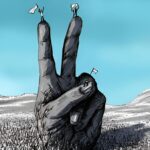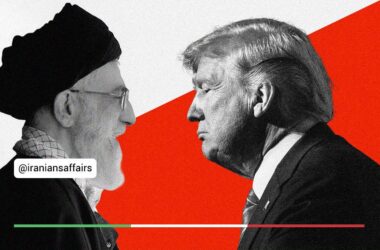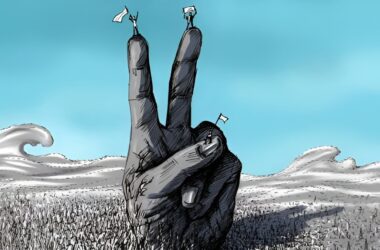With nearly a month passed since concerns were raised by various political individuals and groups regarding the significant and organized influx of Afghans into major cities of Iran, particularly Tehran, recent data released by some sources has exacerbated these concerns. It has also led to new speculations about the goals of this action by the Islamic Republic and its potential implications and outcomes.
In the past month, coinciding with the increased dissemination of images and news about the growing Afghan population in Iranian cities and the continuous and publicized transfer of their groups from Afghanistan to Iran, initial speculations surfaced regarding the regime’s adoption of a long-term macro policy to replace a generational and ethnic segment in the land of Iran.
These speculations, considering the Islamic Republic’s track record of altering the demographic composition in Syria and promoting Shia-ization policies there over more than two decades, did not seem far-fetched. However, in Iran, despite the majority being officially recognized as Shia and according to the laws, there is no need for Shia-ization. The ultimate goal of such demographic manipulation could be to shift the balance of the majority of Iran’s residents in favor of the supporters and affiliates of the regime. The Islamic Republic has a long history of attracting the impoverished in African countries, Syria, and even some countries in South America through financial aid and education provided in religious schools, and most of these recruits have been employed in line with the political and military objectives of the Islamic Republic and Hezbollah in Lebanon.
In such circumstances, attracting large and impoverished Afghan families to create a new generation of ideological adherents, who are financially dependent on the regime, could be a useful option for a government that has faced youth at the forefront of the opposition against the regime.
Before the onset of this organized wave of the Afghan community’s transfer to the country, the regime had already paved the way for forced migration by tightening social and political freedoms and unprecedentedly increasing the economic and living costs in Iran. This was done to assemble all the pieces of the puzzle to implement the policy of forced migration and population replacement.
However, what has added to the dangers of the new policy of the Islamic Republic in recent weeks is the release of further details about the population entering Iran. The population, officially stated to be over six million in official statistics, has been described by Heshmatollah Falahat-Pishe, a former member of the National Security Commission of the Parliament, to have at least one-third of them having a history of working in institutions or military groups.
Simultaneously, news of the transfer of radical Shia forces from Pakistan, who entered Iranian soil under the guise of attending Arbaeen processions in Iraq but have not returned to Pakistan, has also added to the significance of other aspects of this organized transfer.
Considering that one of the strategies of the Islamic Republic to disrupt the national revolution last year was an attempt to provoke ethnic and religious rifts, and in this regard, especially in Kurdistan and Balochistan, it failed, the creation of sectarian and zealous Shia groups capable of inciting military conflicts could be considered as a preventive measure by the regime for future waves of the revolution.
In such an analysis, whenever the embers of the national revolution of Iran flare up again, imported infantries could engage with the protesting populace. In this case, the cost of suppressing the people would not fall on the official government forces, and at the same time, the message that in case of the Islamic Republic’s downfall, all of Iran will turn into a battlefield against religious fundamentalists will be conveyed to the international community and the people inside Iran.
This imported population could also be seen as a trump card for the Islamic Republic in negotiations with Europeans. Europe still remembers Erdogan’s experience in opening borders and the influx of Syrian refugees to the Europe, along with its repercussions, including the entry of Islamic fundamentalists and ISIS supporters into their territory. So, the possibility of pushing millions of Afghan and Pakistani nationals, a significant portion of whom have a history of violent and armed actions, may persuade many countries to favor the Islamic Republic.
This situation becomes more dangerous when we consider some recent interviews of Ahmad Massoud, an Afghan political activist. He has identified a portion of these migrants as Taliban affiliates and, warning the authorities of the Islamic Republic, reminded them that Pakistan, after years of serving these fundamentalists, has gained nothing but daily terrorist attacks on its own soil.
Indeed, what is certain is that this population, whether in the short term or the long term, whether managed by the ruling fundamentalists in Iran or managed by the ruling fundamentalists in Afghanistan, will pose a serious threat to the national security of Iranians and a significant threat to Iran’s national revolution.







